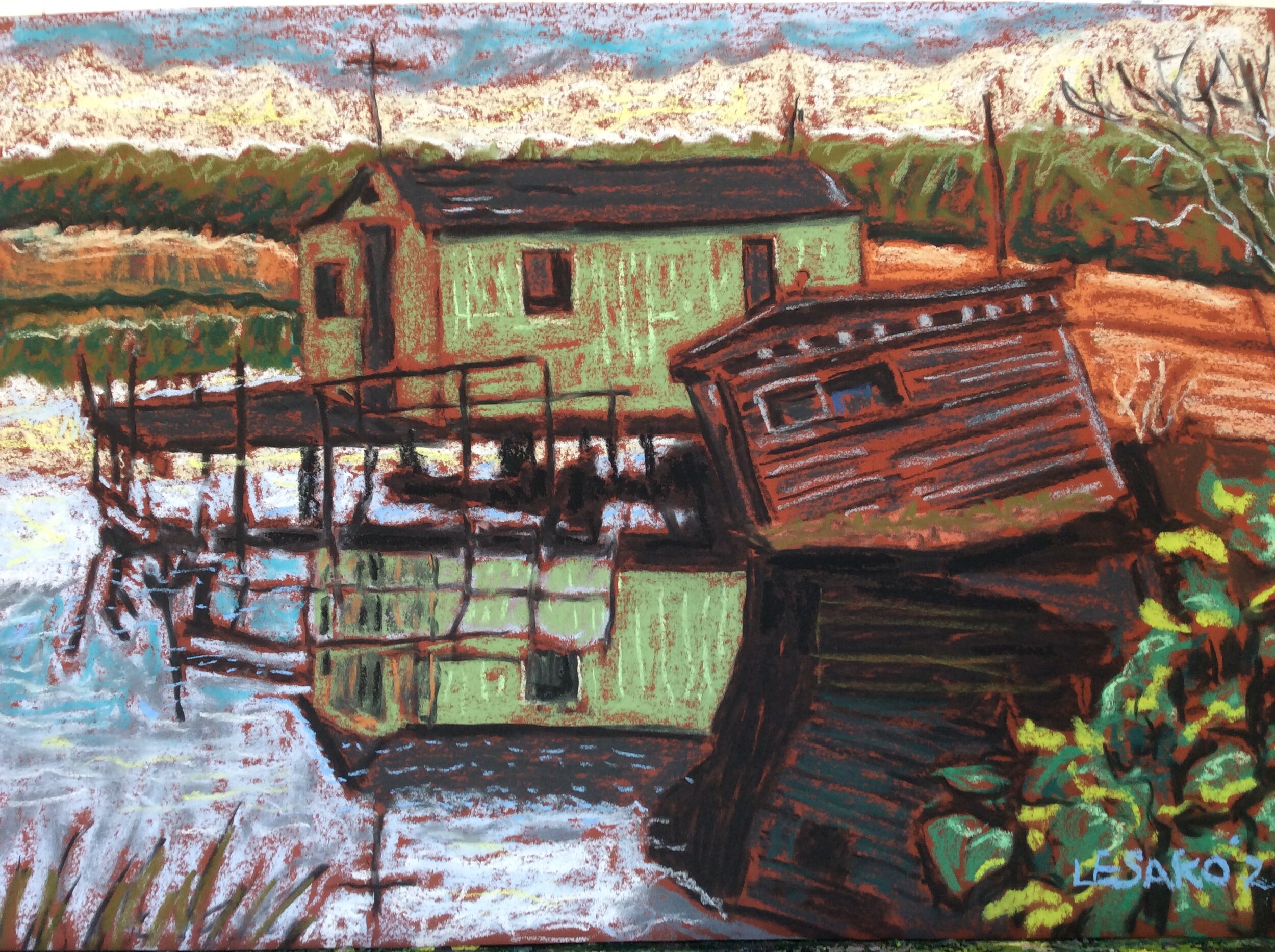featured artist: David Lesako
Visit our window at 541 Warren St. to see these works in person
Local artist David Lesako showcases the Furgary Boat Club (also referred to as Shantytown or The Shacks) and the natural landscape surrounding it in both watercolor and pastel. Dave taught art for 38 years, with students ranging from kindergarteners through college age. After retiring as a public school teacher in Pennsylvania, David and his wife relocated to Ghent. Taking inspiration from both nature, and the historic buildings located in Hudson, his luscious pastel landscapes are often created en plein air, a French expression which means "in the open air" and refers to drawing and painting outdoors. He prefers bright late afternoon or early evening light and enjoys documenting the seasonal changes. Dave lists the French Impressionists and the German Expressionists among his favorite painters.
For more information or to inquire about these pieces, please visit davidlesakoart.com
A Brief History of Furgary Boat Club from the Hudson Area Library:
These buildings are part of a 14.4 acre parcel that was purchased originally by a German immigrant from Indigenous people. There have been businesses on the land including gristmills, slaughterhouses and tanneries. The first Shantytown shacks were constructed in the 1880s and through the middle of the next century they functioned as sites for shad, sturgeon, and herring fishing. Active use of Shantytown continued into the 21st century until the city decreed that the shacks could no longer be used.
Shantytown was known specifically for shad fishing enterprises, which were important in sustaining local families through the Great Depression and World War II. Furthermore, Shantytown now represents one of the few shad fishing sites, an important cultural and economic phenomenon along the Hudson River, still existing. Consequently, Shantytown has been deemed a site eligible for the National Register of Historic Places. Daria Merwin, co-director of the Cultural Resource Survey Program at the New York State Museum in Albany, and Linda Mackey, a historic preservation specialist, have written that Shantytown has "the tangible remains of a traditional way of life that is rapidly disappearing," which "represent[s] a time when sturgeon and shad were abundant in the Hudson River and people made their livelihoods fishing the river and selling their catch on the shore."




